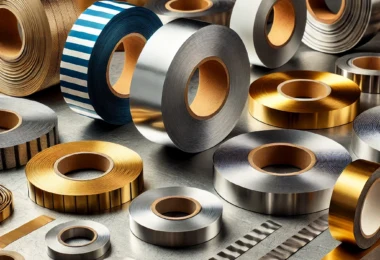I. Introduction
Hot air ovens are ubiquitous in various industries, playing a crucial role in processes ranging from baking to sterilization. Understanding their operation is essential for maximizing efficiency and ensuring optimal outcomes. In this comprehensive guide, we’ll delve into the intricacies of hot air ovens, exploring their mechanisms, applications, advantages, and safety considerations.
II. Understanding Hot Air Ovens: An Overview
Hot air ovens, also known as forced air ovens, are thermal processing devices that utilize convection currents to evenly distribute heat within an enclosed chamber. These ovens have evolved significantly over time, with early iterations dating back centuries. Initially used primarily for baking, hot air ovens are now indispensable across various industries, including food production, pharmaceuticals, and materials testing.
III. The Mechanism Behind Hot Air Ovens
Hot air ovens operate on a simple yet effective principle. Heating elements within the oven generate heat, which is then circulated by fans to ensure uniform distribution throughout the chamber. This convection-based heating mechanism enables precise temperature control, essential for achieving consistent results in various applications. Thermostats play a critical role in maintaining the desired temperature, ensuring optimal performance.
Best Deal Click Now to Buy Your Hot Air Oven
IV. Components of Hot Air Ovens
Key components of hot air ovens include heating elements, fans, thermostats, and insulation. Heating elements are responsible for generating heat, while fans facilitate air circulation, promoting even heating. Thermostats monitor and regulate the temperature, preventing fluctuations that could compromise the process. Quality insulation helps retain heat within the chamber, enhancing energy efficiency and reducing heat loss.
V. Applications of Hot Air Ovens
Hot air ovens find applications across diverse industries. In the food industry, they are used for baking, drying, and dehydrating various products. Pharmaceutical companies rely on hot air ovens for sterilization and stability testing of medications. In materials testing, these ovens are utilized for aging studies and thermal processing of polymers. Rubber and Plastic, a leading manufacturer, incorporates hot air ovens in their production processes to ensure product quality and consistency.
VI. Advantages and Limitations
One of the main advantages of hot air ovens is their ability to provide uniform heating, resulting in consistent outcomes. Additionally, they are energy-efficient compared to other heating methods. However, hot air ovens have limitations, such as a limited temperature range and longer processing times for certain materials. Understanding these factors is crucial for optimizing their use in various applications.
Compare product price Check: Hot Air Oven Price
VII. Safety Considerations
Safety is paramount when operating hot-air ovens. Adequate ventilation is essential to prevent the buildup of potentially harmful gases or fumes. Operators must also exercise caution when handling hot surfaces and high temperatures. Regular maintenance and inspection of equipment are necessary to identify and address potential safety hazards promptly.
VIII. Tips for Maximizing Efficiency
To maximize the efficiency of hot air ovens, proper loading techniques are essential. Ensuring adequate spacing between items promotes uniform heating and prevents uneven cooking. Regular calibration of thermostats and monitoring of temperature settings help maintain accuracy and consistency. Additionally, optimizing airflow within the chamber can enhance performance and reduce processing times.
IX. Future Trends and Innovations
The future of hot air ovens is marked by ongoing advancements and innovations. Emerging technologies, such as enhanced insulation materials and advanced control systems, promise greater efficiency and precision. Automation and integration with smart devices are also expected to streamline processes and improve productivity. As industries continue to evolve, hot-air ovens will undoubtedly play a pivotal role in meeting the demands of modern manufacturing.
X. Conclusion: Exploring the Depths of Hot Air Oven Technology
Hot air ovens, with their versatile applications and reliable performance, stand as indispensable tools in various industries. Understanding their mechanisms, advantages, and safety considerations is essential for harnessing their full potential. As technology continues to advance, hot air ovens will remain at the forefront of thermal processing, driving innovation and efficiency in manufacturing processes.
FAQs (Frequently Asked Questions)
- What is the optimal temperature range for hot air ovens?
The optimal temperature range varies depending on the specific application. However, most hot air ovens can typically achieve temperatures ranging from 50°C to 300°C.
- How often should hot air ovens be maintained?
Regular maintenance is essential to ensure optimal performance and safety. It is recommended to perform routine inspections and maintenance at least once every six months, or more frequently in high-volume production environments.
- Can hot air ovens be used for flammable materials?
Hot air ovens are not recommended for use with flammable materials unless specifically designed and certified for such applications. Using hot air ovens with flammable materials can pose serious safety risks and should be avoided unless proper precautions are in place.
- Are hot air ovens energy-efficient?
Yes, hot air ovens are generally more energy-efficient compared to other heating methods due to their convection-based heating mechanism and insulated chambers. However, energy efficiency may vary depending on factors such as insulation quality and operating conditions. Regular maintenance and optimization practices can further enhance energy efficiency.

















